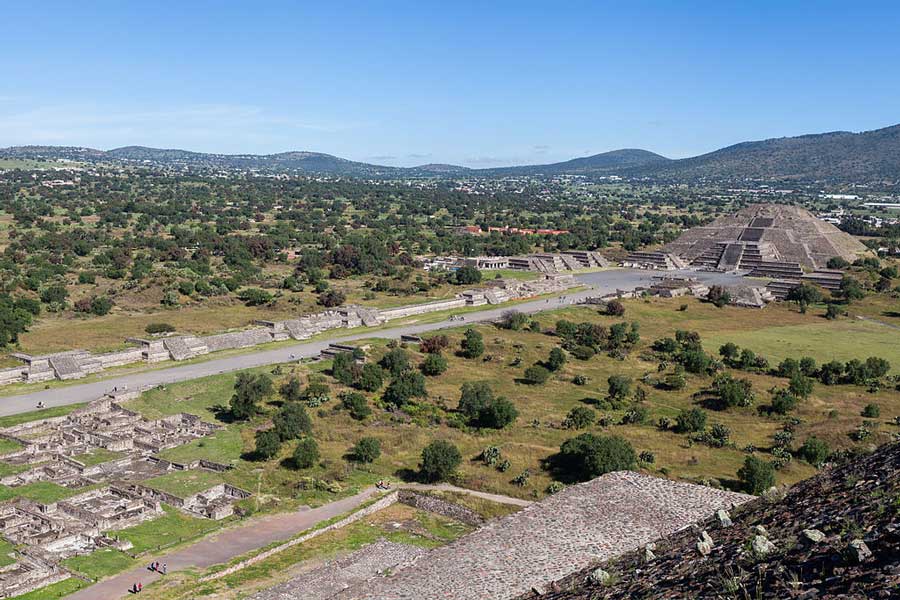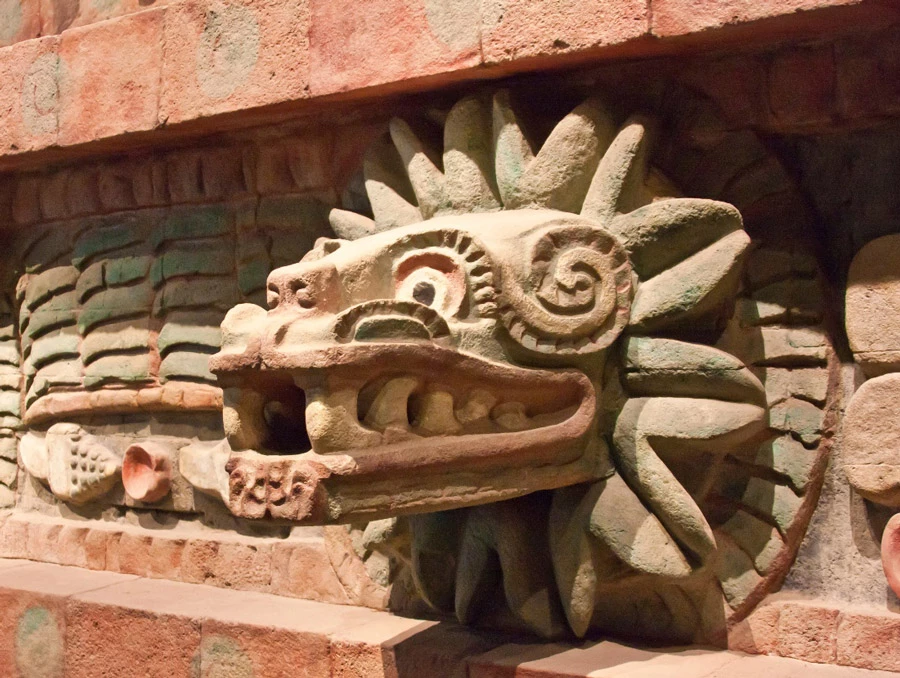Teotihuacan is a Mesoamerican city believed to have been established millennia ago, sometime during the 1st century BC. Situated near modern-day Mexico City, Teotihuacan was a powerful military and political entity for many centuries.
The place was vastly populated, and about 100,000 people resided there when the city was at its peak. The Teotihuacan leaders are known for building several complex and large structures such as the Moon Pyramid, the Sun Pyramid, as well as the Avenue of the Dead.
Even today, the site is known for these architecturally significant pyramids. However they sit today in a dead city, one which was abandoned for unknown reasons sometime around 700 AD, way before the Aztecs came to power in the region.
What happened to the Mesoamericans who lived there? And why was the city, with its rich history and power, suddenly abandoned?
The History of Teotihuacan
Teotihuacan is located about 25 miles (40 km) northeast of Mexico City. The first human inhabitation of Teotihuacan predates the founding of that city by some centuries, dating back to 600 BC.
As per the estimations, there were at that time about 6,000 inhabitants in the Teotihuacan valley, a significant population concentration. Between 100 BC to 750 AD, the area evolved into a prominent administrative center and a huge urban area.
The history of Teotihuacan as a city can be divided into four periods, namely Period I, II, III, and IV. Period I was between 200 BC to 1 AD. During the period, Teotihuacan started growing into a city as farmers on the hillside began moving down to the valley.
- The Hidden River of Mercury at Teotihuacan: Path to the Royal Tombs?
- Olmec Civilization: Their Rise, Culture and Decline
Period II was between 1 AD to 350 AD. During this period, the area experienced explosive growth, and Teotihuacan became the largest metropolis in Mesoamerica. The construction of significant sites such as the Moon Pyramid and the Sun Pyramid was completed during this time. There was also a shift in political power from a monarchical, centralized political system to a bureaucratic and decentralized organization.

Period III existed from 350 AD to 650 AD. It was known as the classical period of Teotihuacan. During this period, Teotihuacan and its surroundings had as many as 125,000 inhabitants and nearly 2,000 buildings. Massive reconstruction of monuments took place during this period.
Period IV lasted from 650 AD to 750 AD. This period marked the ending of Teotihuacan as a significant power of Mesoamerica. Teotihuacan started to decline, but still remained inhabited by people for many decades after its collapse.
Culture and Religion
As per the archaeological evidence, Teotihuacan seems to have been a multi-ethnic city. The official language of Teotihuacan remains unknown, but there is a possibility that the people of Teotihuacan spoke Nahua and Totonac.
According to the linguistic evidence provided by Terrence Kaufman, an American linguist, it can be said that a significant ethnic group in Teotihuacan was of Mixe-Zoquean or Totonacan linguistic affiliation. However, many other scholars believe that the largest population group in Teotihuacan must have belonged to the Otomi ethnicity. It is because the Otomi language was spoken in that area before and after the classic period.
Teotihuacan compounds provide evidence of being segregated by class. There existed mainly three social strata: high elites, intermediate elites, and finally, the working class.
Religion in Teotihuacan was practiced in two different spheres. One at the village and household level and the other at the state level. The people of Teotihuacan believed in eight deities: the Storm God, the Old God, the Pulque God, the Great Goddess, the Feathered Serpent, the Fat God, the Netted Jaguar, and the War Serpent.
Among all the deities, the Feathered Serpent was considered to be a principal deity for the people of Teotihuacan. However, the primary deity of Teotihuacan was believed to be the Great Goddess.
The people of Teotihuacan practiced both animal and human sacrifice. The enemy warriors captured during the battles were brought into the city for ritual sacrifice to ensure the city’s prosperity. A number of stone masks have been discovered in Teotihuacan, known to have been used for funerary contexts, which may be associated with these sacrifices.
Decline and Fall
The great city started declining between around 600 to 700 AD. A number of theories have been proposed for the decline and abandonment of Teotihuacan. One of the prominent theories for the abandonment is the invasion of Teotihuacan by outsiders.

This theory was proposed by George Cowgill, an archaeologist. Archaeological evidence of buildings of elites being burned and ransacked has been found. The outsiders took advantage of the apparently weak defenses of the city and burned down the buildings.
According to another theory, an ecological crisis such as shortage of water, degradation of soil, or deforestation was the main reason for the abandonment of Teotihuacan. Drought was a major crisis that affected the area, and evidence of dry conditions during the key years of Teotihuacan’s fall can be found.
Due to the scarcity of water, agriculturalists were not able to grow the staple food crops like maize. It eventually gave rise to diseases and famine. Owing to these problems, the people of Teotihuacan started abandoning the place.
Class rebellion is another potential cause for the abandonment of Teotihuacan as per another theory. A number of archaeologists believe that the revolt between the elites and leaders of the city led to the fall of Teotihuacan.
This may also be linked to the dry conditions, with the drying of streams leading to crop failure. Eventually, the lack of food and other resources led to conflicts among the people of Teotihuacan. These conditions may have provoked the uprising but for all these theories one thing is clear: by around 750 AD, the great city was completely abandoned.
Much of what made the city beautiful can be seen today surrounding the Avenue of the Dead and its attendant monumental pyramids. But as to why the city was abandoned, they offer no clue.
Top Image: The huge pyramid of the sun in Teotihuacan. Source: Martin M303 / Adobe Stock.
By Bipin Dimri